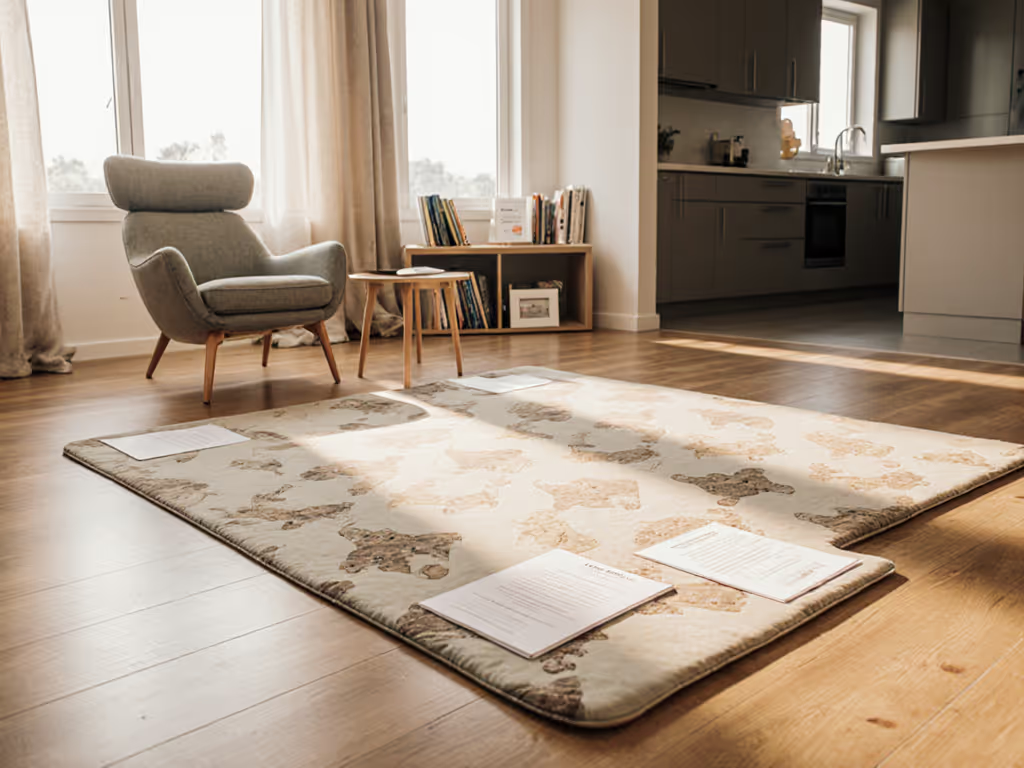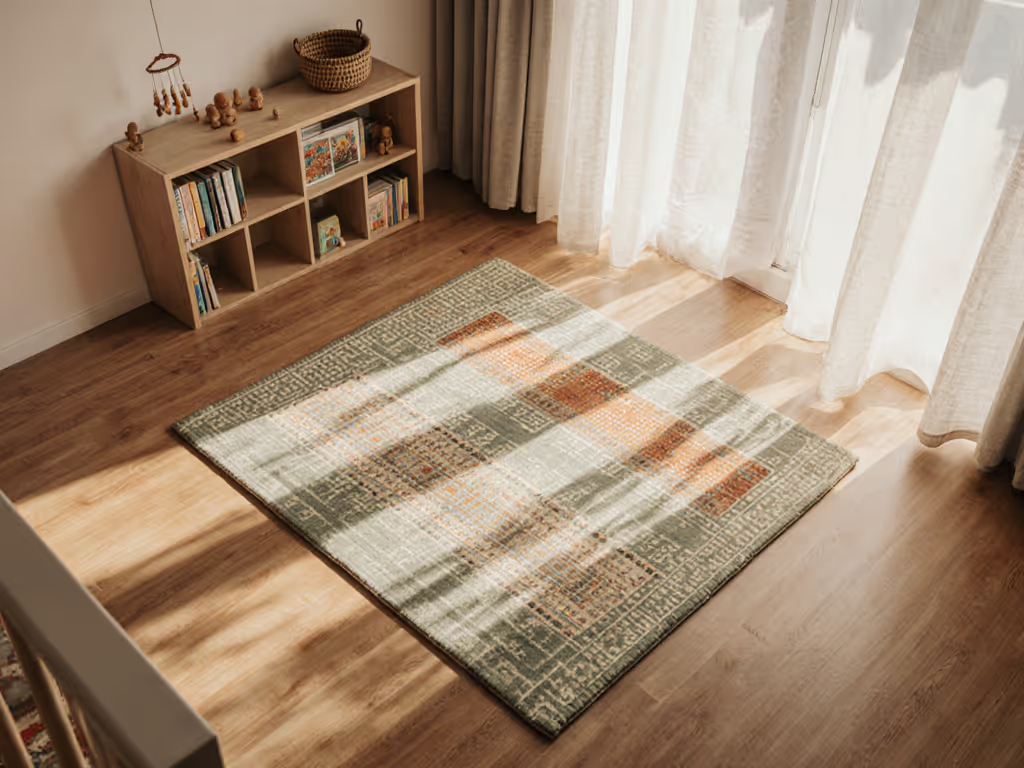
Ultimate Guide to Safe Play Mats for Every Family Home
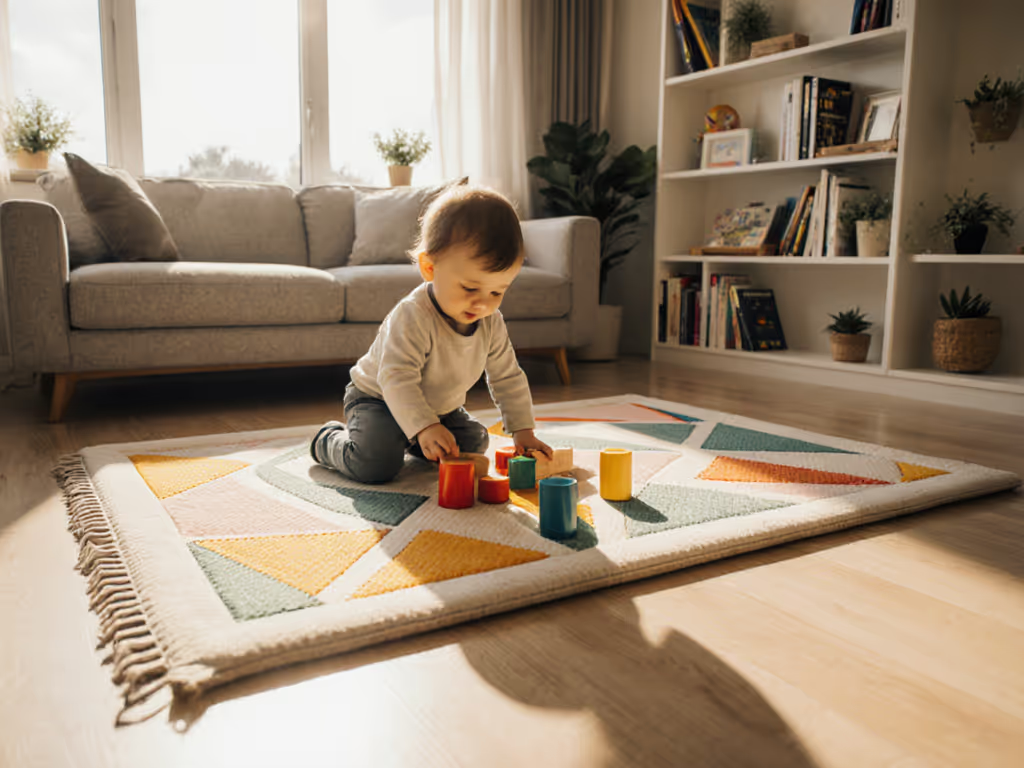
Did you know that over 60 percent of childhood injuries happen right at home? Creating a safe play space is one of the best ways to protect your child and support their growth. The right play mat does more than cushion tumbles. It shapes your child’s learning, encourages movement, and anchors family routines. Find out how simple steps and smart choices can create a foundation for your child’s play and development.
Quick Summary
| Key Point | Explanation |
|---|---|
| 1. Assess your play space needs | Identify open areas in your home suitable for a play mat, measuring the space to ensure it accommodates your child's growth and movements. |
| 2. Choose safe materials carefully | Opt for mats that are BPA free, PVC free, and OEKO-TEX certified, avoiding cheap materials potentially harmful to your child's health. |
| 3. Verify certifications and testing | Look for proof of safety certifications from trusted organizations to ensure the mat's quality and safety standards are met. |
| 4. Prepare the mat properly before use | Allow your play mat to decompress upon arrival, and ensure the floor is clean to create a safe and inviting play area. |
| 5. Maintain and inspect regularly | Conduct weekly checks for wear or defects, clean appropriately to maintain hygiene, and replace the mat if it shows significant deterioration. |
Step 1: Assess Your Home's Play Needs and Space
Picking the perfect play mat starts with understanding your unique home environment and your child's specific developmental stage. Think of this assessment like creating a custom playground blueprint tailored precisely to your family's lifestyle and living space.
Start by walking through your home with a critical eye toward potential play zones. Which areas offer enough open floor space for movement? Consider rooms like living rooms, playrooms, or even spacious hallways that can accommodate a play mat. Measure the available floor space carefully—aim for an area that gives your little one room to roll, crawl, and eventually tumble without bumping into furniture.
Your child's age and activity level are crucial factors in selecting mat size and thickness. For newborns and infants, a smaller mat around 4x4 feet works perfectly. As your child grows and becomes more mobile, consider expanding to larger surfaces like 6x6 or 8x8 feet that provide more exploration territory. Thickness matters too: younger babies need about half an inch of cushioning, while active toddlers benefit from mats with 1 inch or more of dense padding.
Pro Tip: Choose materials matching your specific use case. XPE foam works brilliantly for high-traffic playrooms with lots of movement, while cork provides a gentler surface for calmer play sessions.
Pay attention to your floor type when selecting a play mat. Hardwood needs more cushioning than carpeted areas. Tile or concrete floors absolutely require thicker, more protective surfaces to prevent potential injuries during those adorable but unpredictable baby movements.
Remember that your play mat isn't just a safety feature—it's a developmental playground. The right surface encourages exploration, supports motor skill development, and creates a dedicated learning space right in your home. Your next step? Measuring and selecting the perfect mat that fits your unique family needs.
Step 2: Research and Compare Safe Play Mat MaterialsSelecting the right play mat material is like choosing armor for your child's first battlefield of exploration. Not all materials are created equal and some can hide potential risks that parents need to understand before bringing them home.When diving into material research, start by focusing on safety certifications. Look for materials that are BPA free, PVC free, and OEKO-TEX certified. These credentials signal that the play mat meets rigorous international safety standards. TPU foam and French linen microfiber emerge as top contenders in the safety arena. They offer remarkable protection without compromising on comfort or durability.
XPE foam stands out as a stellar material for active play spaces. This dense foam provides excellent water resistance and chemical safety. It cushions falls while maintaining structural integrity even under constant toddler tumbling. TPU and TPE hybrid materials offer another fantastic option—they deliver flexibility, wear resistance, and joint-friendly softness that adapts to your child's growing movements.
Warning: Avoid materials like low-quality cotton, traditional rubber, EVA foam, and PVC. These can contain harmful toxins that might off-gas or degrade quickly with intense use.
Consider your specific environment when comparing materials. A play mat for a high-energy playroom needs different properties compared to a quieter nursery corner. XPE foam works brilliantly in busy spaces, while softer TPU materials might suit gentler play zones. Pay attention to how each material performs under real-world conditions—durability, ease of cleaning, and resistance to wear matter just as much as initial safety certifications.
Your material research isn't just about protection. It's about creating a safe, supportive environment where your child can learn, grow, and explore confidently.
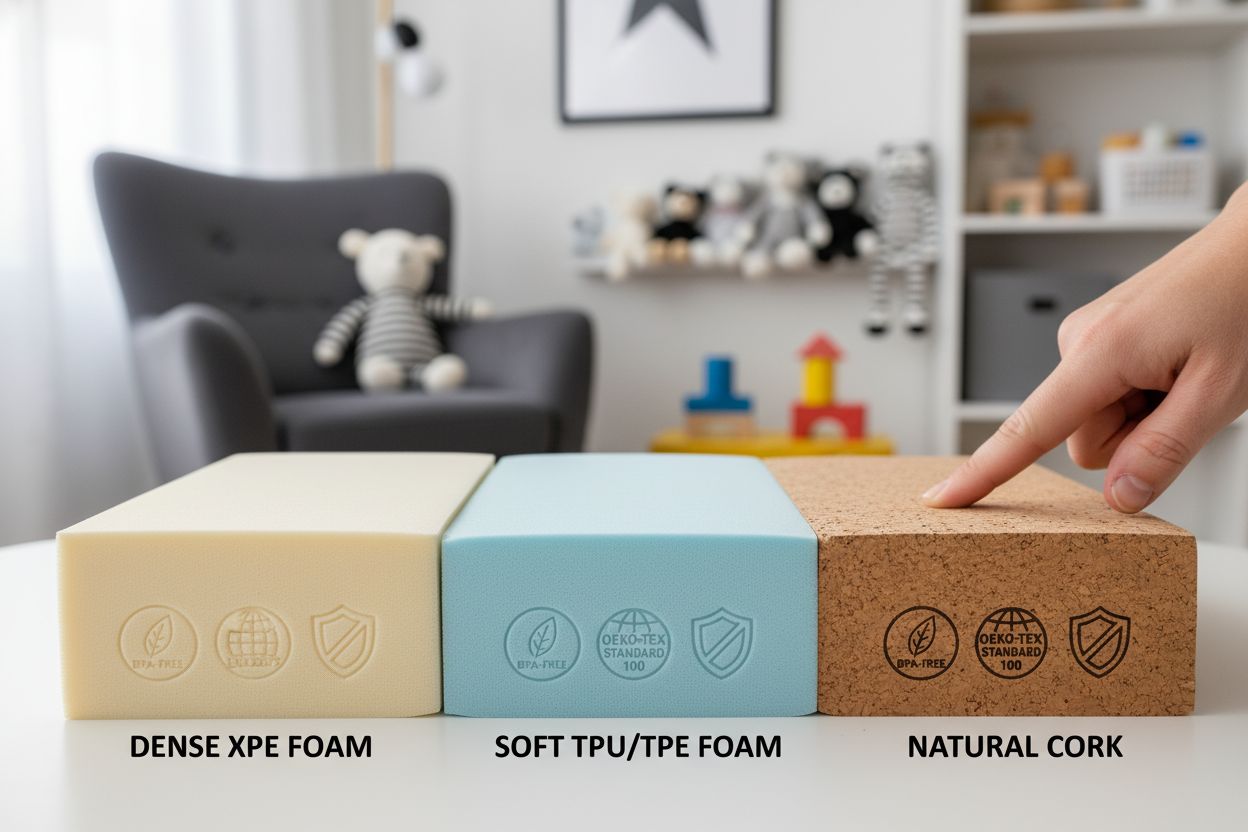 The next step? Moving from research to actual selection and understanding how these materials translate into real-world performance.
The next step? Moving from research to actual selection and understanding how these materials translate into real-world performance.
Here's a comparison of common play mat materials and their key features:
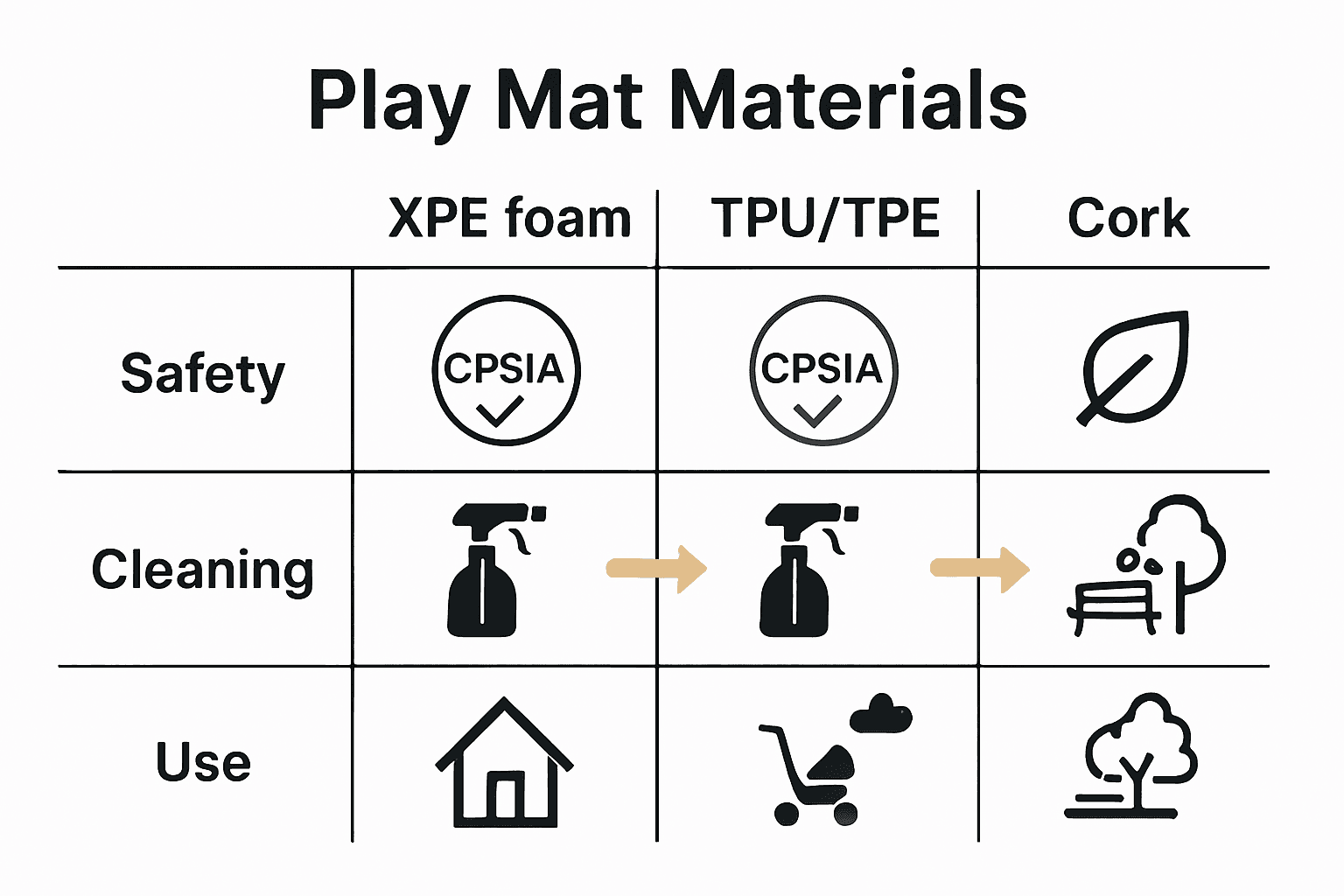
| Material | Safety Certifications | Best For | Cleaning & Care |
|---|---|---|---|
| XPE Foam | BPA Free<br>OEKO-TEX | High-traffic playrooms | Wipe with mild soap |
| TPU/TPE Hybrid | PVC Free<br>OEKO-TEX | Active & gentle play zones | Spot clean, air dry |
| Cork | Natural<br>Hypoallergenic | Calmer, quiet nursery spaces | Wipe, avoid excess water |
| French Linen | OEKO-TEX<br>Natural Fibers | Soft, stylish play areas | Gentle machine wash |
Step 3: Check Certifications and Safety Standards
Navigating safety certifications might feel like decoding a complex puzzle, but understanding these standards is your ultimate shield in protecting your child's play environment. Think of certifications as a parent's secret weapon in ensuring maximum safety for every inch of your little one's play space.
Start by looking for comprehensive safety certifications that go beyond surface-level promises. In the United States, the Consumer Product Safety Improvement Act requires third-party testing and a General Conformity Certificate for children's products. This means any play mat you purchase should have documented proof of meeting strict safety regulations. European standards like EN 71 provide another robust benchmark covering mechanical safety, flammability, and chemical composition—crucial factors when selecting a play surface.
Key certifications to hunt for include OEKO-TEX Standard 100, which guarantees the product has been tested for harmful substances. Look for labels that specifically mention being free from dangerous chemicals like BPA, PVC, lead, and phthalates. These aren't just fancy marketing terms—they represent concrete safety measurements that protect your child's health.
Pro Tip: Always request and review the actual certification documents. Reputable manufacturers will be transparent and happy to provide detailed safety documentation.
Don't just trust marketing language. Dig deeper by checking for independent laboratory testing results. Certifications from recognized international bodies like SGS or INTERTEK add an extra layer of credibility. These organizations conduct rigorous tests that simulate real-world usage conditions, ensuring the play mat can withstand active toddler exploration without compromising safety.
Remember that certifications are more than paperwork—they represent a commitment to child safety. Your diligence in checking these standards transforms a simple play mat into a trusted developmental space where your child can learn, play, and grow with complete parental peace of mind. Ready to move from research to actual selection? Your next step involves translating these safety standards into practical purchasing decisions.
Step 4: Prepare and Install the Selected Play Mat
With your perfect play mat selected, it's time to transform that carefully researched product into a safe and welcoming play zone for your little explorer. Think of this preparation as setting the stage for countless moments of discovery and joy.
Once your play mat arrives, resist the temptation to immediately spread it out. Memory foam mats need time to decompress and settle after being tightly packaged. Give your mat 24 to 72 hours to relax and return to its full shape and thickness. During this time, find a clean open area where the mat can breathe and expand naturally. Keep it away from direct sunlight or heating vents that might affect its material properties.
Before installation, create a pristine foundation. Clean your floor thoroughly using a mild cleaner that won't leave residue. For hardwood or tile surfaces, a gentle vinegar and water solution works perfectly. Sweep or vacuum to remove any dust or debris that could potentially damage the mat's underside. Your goal is a smooth clean surface that provides optimal support and prevents any potential scratching or uneven wear.
Pro Tip: Wipe both sides of the play mat with a mild soap solution and allow it to air dry completely in a well-ventilated area. This initial cleaning removes any manufacturing residues and prepares the surface for your child's adventures.
When placing the mat, ensure the surface is completely flat with no bumps or uneven areas. Some mats might require interlocking or careful alignment. Take your time positioning it precisely where you want your child's play area to be. Consider factors like proximity to electrical outlets safety distance from furniture and ease of parental supervision.
Your play mat is now more than just a surface. It's a carefully prepared learning landscape where your child will roll crawl and eventually take those first magical steps. Each careful preparation step transforms a simple mat into a safe developmental playground.
Next up? Understanding how to maintain and care for this important family investment.
Step 5: Test and Maintain Safety for Continued Use
Your play mat journey doesn't end with installation. Maintaining its safety and performance requires consistent attention and care. Think of this maintenance as routine health checks for your child's primary play environment.
Start with a comprehensive initial safety test. Carefully inspect the entire surface for any manufacturing defects potential weak spots or areas that might compromise safety. Press firmly across different sections checking for consistent cushioning and structural integrity. Look for any signs of uneven compression bubbling or potential material breakdown. These early checks can prevent future issues and ensure your play mat remains a reliable protective surface.
Establish a weekly cleaning routine that keeps the play mat hygienic without damaging its materials. Different materials require specific approaches. Foam mats typically respond best to spot cleaning with mild soap and water. Fabric surfaces might tolerate gentle machine washing on delicate cycles. Always air dry completely to prevent moisture buildup that could lead to mold or material degradation.
Pro Tip: After any illness in the household thoroughly disinfect the play mat using child safe cleaning solutions. This prevents potential bacterial or viral transmission during future play sessions.
Regular visual and tactile inspections are crucial. Check for signs of wear like thinning material surface cracks or areas losing their original cushioning. Pay special attention to edges and corners where breakdown often begins first. Replace the mat immediately if you notice significant structural changes that could compromise its protective qualities.
Your commitment to ongoing maintenance transforms the play mat from a simple product into a trusted safety zone. By staying vigilant you create a consistent reliable environment where your child can explore learn and grow with maximum protection. Each careful inspection and cleaning becomes an investment in your child's developmental journey.
Turn Your Play Space Into a Safe, Beautiful Haven
Are you feeling overwhelmed by all the details that go into picking a safe play mat? The Ultimate Guide to Safe Play Mats for Every Family Home highlights how challenging it is to choose a play surface that is not only stylish but also rigorously tested and toxin-free. Many parents want real transparency in safety standards, true durability for wild toddler energy, and reliable materials that make maintenance simple. Yet it is tough to find a product that checks every box and actually looks beautiful in your home.
Imagine a play mat that offers complete peace of mind and blends effortlessly into your living space. FloorBloom is here to help you conquer those concerns by combining transparent testing with honest guidance for families. Give your child a certified safe play environment while elevating your decor. Now is the perfect moment to explore our curated selection of safe, stunning play mats. Discover your family's perfect fit and enjoy every roll, crawl, and cartwheel with total confidence. Start building your safe play zone today.
Frequently Asked Questions
How do I assess the right size for a play mat in my home?
To assess the right size for a play mat, measure the available open floor space in potential play zones like living rooms or playrooms. Aim for a mat that allows your child to roll and crawl comfortably—generally, a 4x4 feet mat is suitable for infants, while larger mats around 6x6 or 8x8 feet are better for toddlers.
What materials should I look for when buying a safe play mat?
When choosing a safe play mat, look for certifications such as BPA-free, PVC-free, and OEKO-TEX. Prioritize materials like XPE foam for active play or TPU/TPE hybrids for softer surfaces, and avoid lower quality materials that may contain harmful toxins.
How can I ensure my play mat meets safety standards?
To ensure your play mat meets safety standards, check for key certifications like OEKO-TEX and request documentation to verify compliance with safety regulations. This ensures that the mat has been rigorously tested for harmful substances and can adapt to your child's play activities.
What steps should I take to prepare my home for a new play mat?
Before installing a new play mat, clean the floor thoroughly with a mild cleaner to create a smooth, dust-free foundation. Allow the mat to decompress for 24 to 72 hours after unpacking, ensuring it’s fully shaped and safe for your child to play on.
How do I maintain my play mat's safety and condition?
To maintain your play mat's safety, establish a weekly cleaning routine using child-safe cleaning solutions appropriate for its material. Regularly inspect the mat for signs of wear, and replace it if you notice significant structural changes that could compromise its protective qualities.
What should I do if my child gets sick after playing on the mat?
If your child gets sick after playing on the mat, thoroughly disinfect it using child-safe cleaning solutions to prevent bacterial or viral transmission. Regularly clean your play mat, especially after illnesses, to ensure a safe play environment for your child.
Recommended
Related Articles

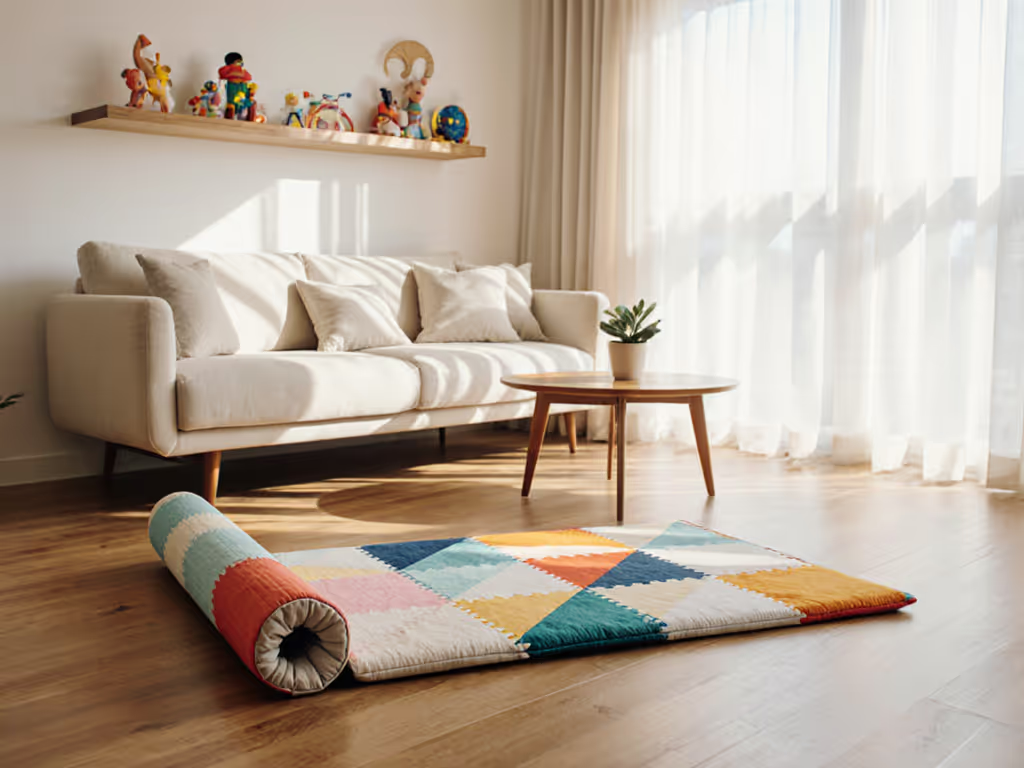
What Is a Foldable Play Mat? Complete Guide
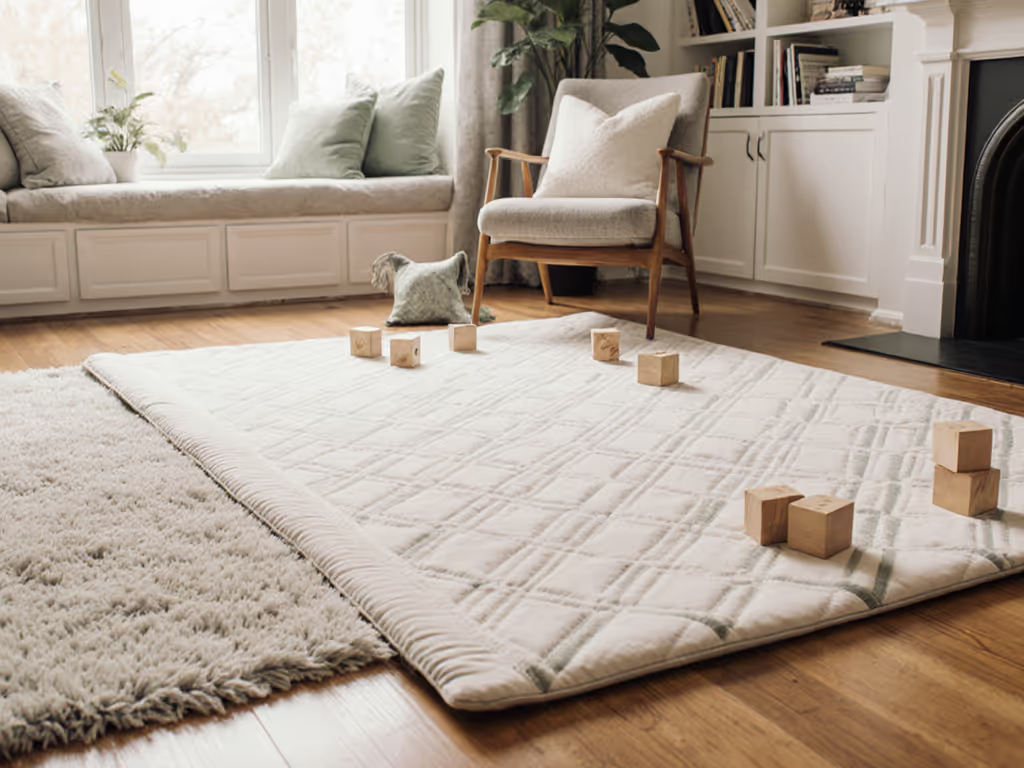
Role of Play Mats: Complete Guide for Safe Play Spaces
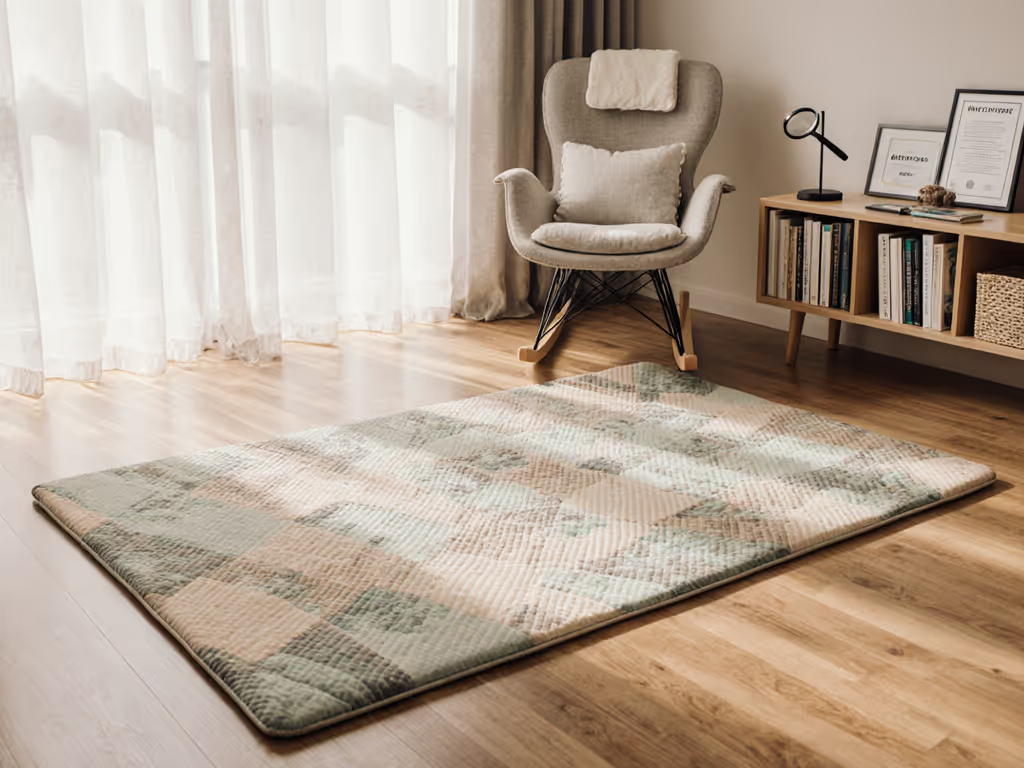
Play Mat Safety Standards Explained: Essential Guide
